How looking back can help power transmission engineers to move forward
3rd June 2013
Source:
Bauer Gear Motor GmbH
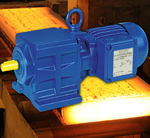
Power transmission design is a moving discipline, one which requires practitioners to consider the challenges of tomorrow when designing the latest innovations for today. It is natural that design styles move on and that, as technologies develop and industries progress, standard solutions change and modernise.
However, any good engineer will tell you that it is important to learn from the past; sometimes an older principle can be the answer to an industry’s latest demands.
Miroslav Slawik, Global Account Manager Basic Metal for Bauer Gear Motor, explains the evolution of gearbox design for high speed roller tables in the steel industry and how looking back may be the way forwards...
Roller tables often form the backbone of a steel processing plant, transporting the massive slabs of metal through the plant and the various stages of production. The job is a tough one as the working temperature variation is high with a lot of abrasive particles in the immediate environment. During transport the steel itself will emit a large amount of heat and the physical weight as it passes over each roller means that they need to be able to withstand high and regular shock loading.
Up until the 1970’s the most common solution for driving the rollers was an inline helical gearbox mounted on a pedestal with a solid coupling connecting the output shaft to the roller. The design was extremely sturdy and the support from the mounting pedestal allowed a gearbox and motor to be specified which could withstand any backlash as the roller took the load of the metal.
While the design was fit for purpose, it was undeniable that there were inherent flaws as well. The pedestal mount required a large footprint for each drive system, taking up valuable floor space. The necessity to specify a coupling also drove up the procurement cost as well as installation and maintenance requirement. Plant engineers required a new solution which still offered the robustness and torque outputs necessary for the application.
As gear motor technology developed, motors were designed with greater efficiency which meant that smaller units were able to offer greater outputs. Shaft mounted gear motors with smaller footprints could be mounted directly to the shaft of a roller with just a small support strut used to hold the drive in position. The units were more compact, cheaper, and, without the need for a coupling, far quicker to install. The overall space saving was close to 50% which allowed more access for personnel along the tables.
Shaft mounted gear motors offered end users such an advantage in terms of costs and space saving that by the end of the 1980’s it was the standard solution for roller tables all over the world. However, no industry ever remains static and during the last few decades the demand for steel has continued to rise. This has put pressure on production plants to increase productivity. To facilitate increased throughput, plant engineers are specifying roller tables with ever increasing speeds; average speeds have risen from approximately 2m/sec to as much as 8m/sec.
In order to drive the rollers at up to four times their original speed a motor is required which has four times the power rating. To keep a roller spinning at 2m/sec when fully loaded requires a 10kW motor whereas a 40kW motor is necessary to transport the steel at 8m/sec:
The extra size of the motors adds pressure to the drive shaft, the retaining structure and a greater strain on the gear casing at the point of contact. The increased workloads can also cause vibrations and internal strain which in turn can wear components and mounting points; in severe cases this has been known to cause oil leaks and component failure.
The original reasons that shaft mounted gearboxes became the industry standard was due to their small footprint, low cost and simple installation. There are now many applications where the demand for larger motors means that footprints are increasing; the low costs are being eroded by early failure; and maintenance requirements outstrip installation advantages. Once again Design Engineers are searching for new solutions.
Interestingly the new requirements for high-speed roller tables have prompted Bauer design engineers to return to the designs of the 1970’s, albeit with a modern influence. They recognised that by returning to a pedestal mount and an in-line helical gear box it is possible to allow for increased duty demands and design-in a far higher tolerance to shock loading and vibration. The larger motors can be easily accommodated and, once installed, trusted to deliver the power outputs required.
This arrangement also allows a flexible coupling to be designed back into the system, providing both backlash protection for the gearmotor, but also a high degree of vibration isolation. For example Dura-Flex couplings from TB-Woods employ a flexible polyurethane material that absorbs shock loading and torsional vibration. By adding the coupling back into the solution the drive is now protected from shock loading caused as the steel rolls by. This reduced wear justifies the procurement costs of the component.
While the cost saving and simplification of shaft mounted parallel gear motors are undeniable, and still of great advantage in many applications, the current demands of the steel industry for increased production and higher speeds, means that there are times when they may not be an ideal long-term option. It is vitally important that power transmission engineers remember that, just because a solution is an industry standard now, it doesn’t mean that it will continue to suit all applications.
When specifying drive systems for applications with tough environments it is important to speak to a solutions provider with the experience to understand the implications of each individual scenario. Bauer Gear Motor employs engineers with many years experience in designing bespoke power transmission systems across many industries. With experience they have learned that it is important to study the history of their field of expertise in order to continue its development.
Miroslav Slawik, Global Account Manager Basic Metal for Bauer Gear Motor, explains the evolution of gearbox design for high speed roller tables in the steel industry and how looking back may be the way forwards...
Roller tables often form the backbone of a steel processing plant, transporting the massive slabs of metal through the plant and the various stages of production. The job is a tough one as the working temperature variation is high with a lot of abrasive particles in the immediate environment. During transport the steel itself will emit a large amount of heat and the physical weight as it passes over each roller means that they need to be able to withstand high and regular shock loading.
Up until the 1970’s the most common solution for driving the rollers was an inline helical gearbox mounted on a pedestal with a solid coupling connecting the output shaft to the roller. The design was extremely sturdy and the support from the mounting pedestal allowed a gearbox and motor to be specified which could withstand any backlash as the roller took the load of the metal.
While the design was fit for purpose, it was undeniable that there were inherent flaws as well. The pedestal mount required a large footprint for each drive system, taking up valuable floor space. The necessity to specify a coupling also drove up the procurement cost as well as installation and maintenance requirement. Plant engineers required a new solution which still offered the robustness and torque outputs necessary for the application.
As gear motor technology developed, motors were designed with greater efficiency which meant that smaller units were able to offer greater outputs. Shaft mounted gear motors with smaller footprints could be mounted directly to the shaft of a roller with just a small support strut used to hold the drive in position. The units were more compact, cheaper, and, without the need for a coupling, far quicker to install. The overall space saving was close to 50% which allowed more access for personnel along the tables.
Shaft mounted gear motors offered end users such an advantage in terms of costs and space saving that by the end of the 1980’s it was the standard solution for roller tables all over the world. However, no industry ever remains static and during the last few decades the demand for steel has continued to rise. This has put pressure on production plants to increase productivity. To facilitate increased throughput, plant engineers are specifying roller tables with ever increasing speeds; average speeds have risen from approximately 2m/sec to as much as 8m/sec.
In order to drive the rollers at up to four times their original speed a motor is required which has four times the power rating. To keep a roller spinning at 2m/sec when fully loaded requires a 10kW motor whereas a 40kW motor is necessary to transport the steel at 8m/sec:
The extra size of the motors adds pressure to the drive shaft, the retaining structure and a greater strain on the gear casing at the point of contact. The increased workloads can also cause vibrations and internal strain which in turn can wear components and mounting points; in severe cases this has been known to cause oil leaks and component failure.
The original reasons that shaft mounted gearboxes became the industry standard was due to their small footprint, low cost and simple installation. There are now many applications where the demand for larger motors means that footprints are increasing; the low costs are being eroded by early failure; and maintenance requirements outstrip installation advantages. Once again Design Engineers are searching for new solutions.
Interestingly the new requirements for high-speed roller tables have prompted Bauer design engineers to return to the designs of the 1970’s, albeit with a modern influence. They recognised that by returning to a pedestal mount and an in-line helical gear box it is possible to allow for increased duty demands and design-in a far higher tolerance to shock loading and vibration. The larger motors can be easily accommodated and, once installed, trusted to deliver the power outputs required.
This arrangement also allows a flexible coupling to be designed back into the system, providing both backlash protection for the gearmotor, but also a high degree of vibration isolation. For example Dura-Flex couplings from TB-Woods employ a flexible polyurethane material that absorbs shock loading and torsional vibration. By adding the coupling back into the solution the drive is now protected from shock loading caused as the steel rolls by. This reduced wear justifies the procurement costs of the component.
While the cost saving and simplification of shaft mounted parallel gear motors are undeniable, and still of great advantage in many applications, the current demands of the steel industry for increased production and higher speeds, means that there are times when they may not be an ideal long-term option. It is vitally important that power transmission engineers remember that, just because a solution is an industry standard now, it doesn’t mean that it will continue to suit all applications.
When specifying drive systems for applications with tough environments it is important to speak to a solutions provider with the experience to understand the implications of each individual scenario. Bauer Gear Motor employs engineers with many years experience in designing bespoke power transmission systems across many industries. With experience they have learned that it is important to study the history of their field of expertise in order to continue its development.
Similar articles
More from Bauer Gear Motor GmbH
- Keeping water treatment systems running through flood conditions 5th March 2018
- What role do motors and drives play in the water industry? 22nd June 2017
- Are motors the missing puzzle piece in drive train efficiency puzzle? 1st September 2016
- Bauer delivers efficiency for Pharmaceutical sector 10th May 2016
Product Centre Updates
2024 World Battery & Energy Storage Industry Expo (WBE)
8th August 2024
China 1st and 2nd Floor, Area A, China Import and Export Fair Complex

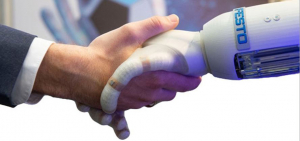
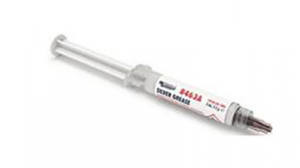
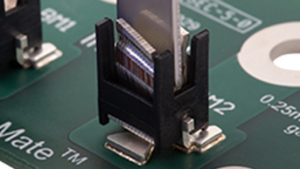
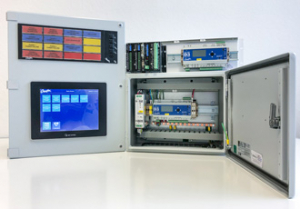







Write a comment
No comments